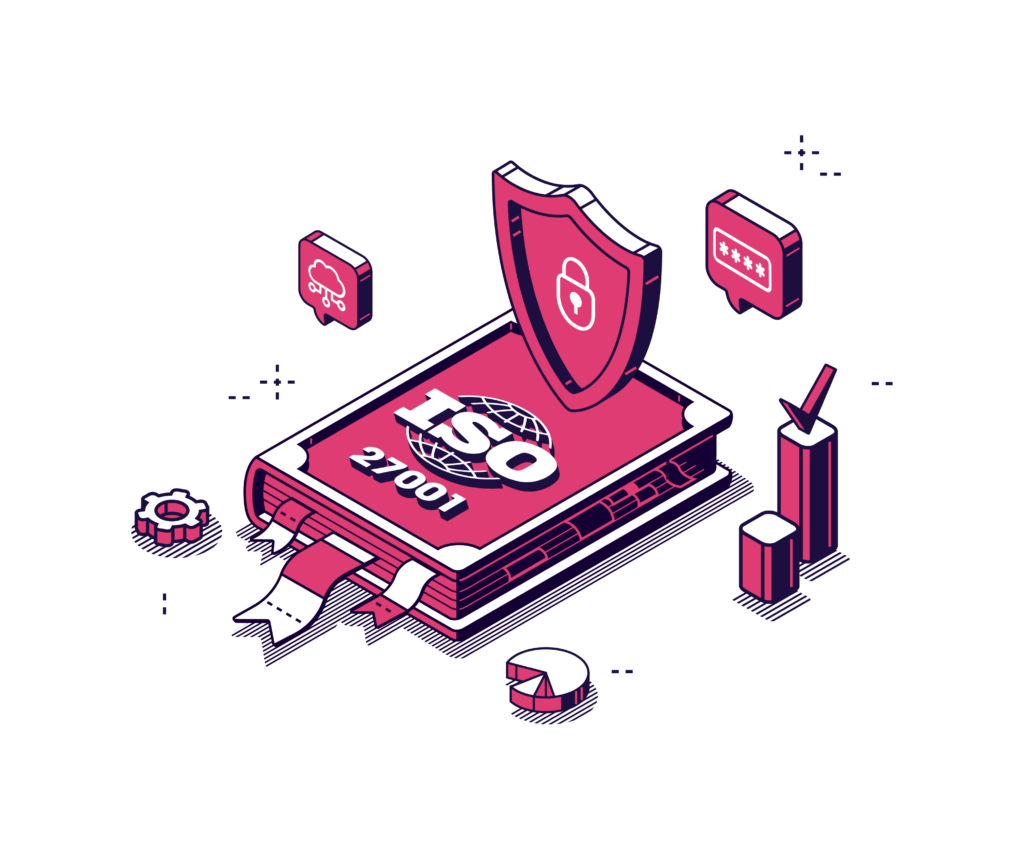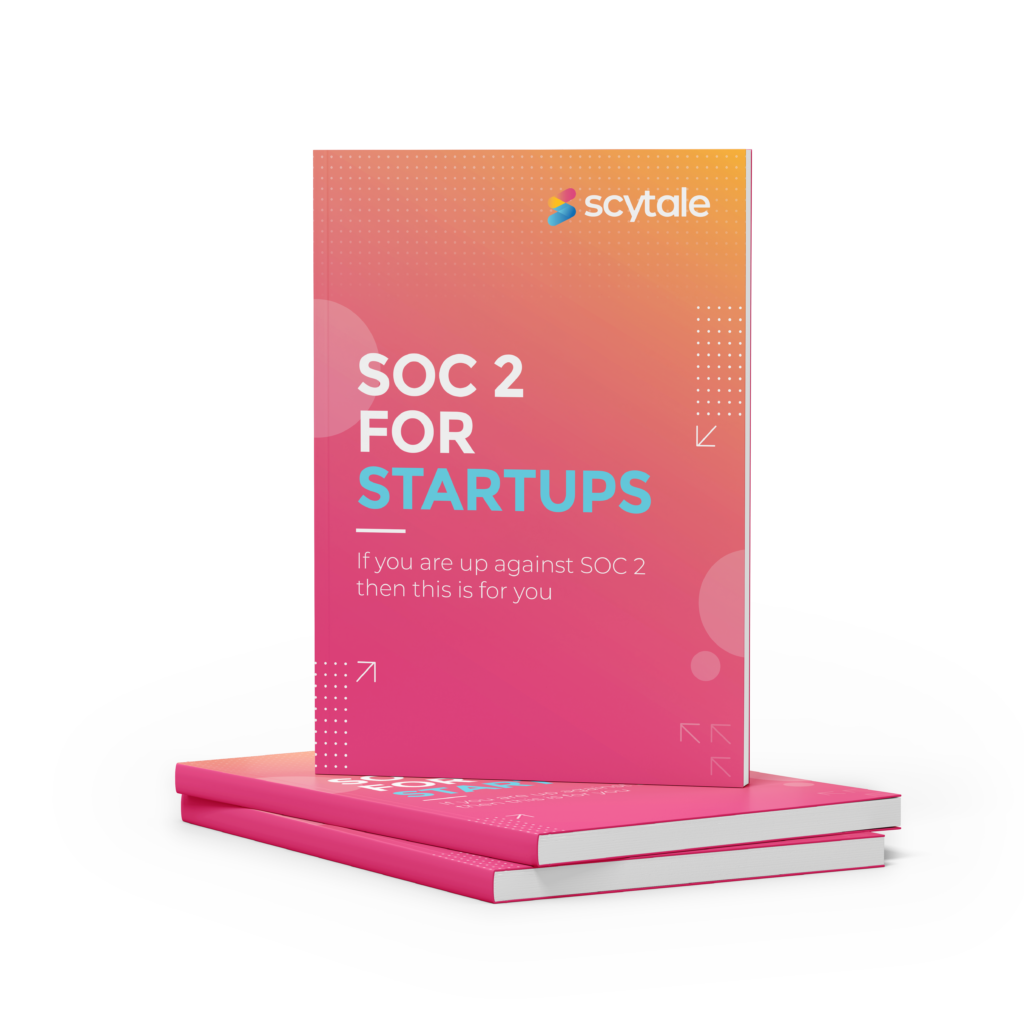Curious about the battle between ISO 27001 vs SOC 2? When it comes to cybersecurity and data privacy, these two heavyweights step into the ring – The two prominent frameworks. ISO 27001 and SOC 2 are like two fighters with different styles, each bringing their unique approach to the fight. ISO 27001 is all about building a solid information security management system that follows international best practices. It’s like a meticulous architect, carefully identifying risks, implementing security controls, and constantly improving security measures. It even comes with its own ISO 27001 initial assessment report, like a blueprint for success. On the other side of the ring, we have SOC 2, the audacious auditor. SOC 2 compliance focuses on evaluating a service organization’s controls for data security, availability, processing integrity, confidentiality, and privacy. It’s like a relentless investigator, digging deep to ensure that the organization’s defenses are rock-solid. So, whether you prefer the comprehensive approach of ISO 27001 or the focused approach of SOC 2, both frameworks pack a punch when it comes to establishing trust and security.
Which is right for your business? It’s a common question, for a good reason. The two information security frameworks are very similar in many ways. Both represent the highest standards of information security. Both are an excellent way to demonstrate how seriously you take your customers’ data. And they both require care and attention to implement correctly. In other words, when we assess ISO 27001 vs SOC 2, we’re not asking which is better. They’re both benchmarks for information security best practices. We’re assessing which is optimal for your business, at the current time.
To appreciate which standard is appropriate for your business, we’re going to need to dig a little deeper into the differences. So, yes, to contradict that previous somewhat condescending bad joke, there are differences…
ISO 27001 vs SOC 2: The meaning of certification
One of the critical differences between ISO 27001 and SOC 2 is that SOC 2 compliance is not a certification. This distinction is crucial because it highlights the different approaches these standards take towards validating information security practices. If you pass the exacting ISO 27001 requirements, then your business is ISO 27001 certified. However, in the case of SOC 2, the auditor issues a formal report, confirming whether or not you met the relevant criteria, based on his professional evaluation. We can feel our palms getting sweaty just thinking about it.
In simple terms, an attestation is when an auditor provides an independent opinion, like in the case of a SOC 2 audit.
It’s important to understand the distinction as it can help us appreciate the real-world difference in becoming compliant in either standard.
Both certification and attestation involve comprehensive assessments by an independent auditor that measures your information security standards against a set of objective criteria.
However, that raises a question. All things being equal, surely it’s better to hold a formal certification? Won’t that impress customers and prospects more?
It may be true that some customers will be more impressed by an ISO 27001 certification, particularly in markets where ISO 27001 compliance is the more commonly recognised standard.
However, the SOC 2 attestation report also has its own unique advantages. Notably, the attestation report describes in detail the design and operating effectiveness of the controls your company has developed to meet the SOC 2 criteria. That can be attractive to discerning customers who want an objective account of the steps you take to safeguard their data and your information security best practices.
What else makes an ISO 27001 compliance report different from a SOC 2 compliance report?
The distinction between a certification and attestation isn’t arbitrary, a mere whim of the auditors. Rather, it reveals the fundamental distinction between ISO 27001 and SOC 2 compliance. However, there are a few other key differences between the two frameworks that showcase their unique processes. Let’s take a look a them:
Location: an essential consideration for the two standards
As indicated above, it’s important to consider which standard your customers (and potential future customers) will value most.
In part, the preference will be determined by where the customer is based. ISO 27001 is a common compliance requirement in Europe and is internationally recognized as the highest standard in information security. In the US market, many businesses want the reassurance that you are SOC 2 compliant, as SOC 2 compliance is widely recognized in the US.
When considering how a compliance framework can advance your business goals, you should therefore think carefully not just about where you’re currently operating but which markets you want to expand to.
Establishing an ISMS for your ISO 27001 certification report
ISO 27001 compliance defines specific standards that need to be met and clear controls that need to be implemented in order to become certified. This is where understanding what exactly ISO 27001 entails becomes important. The company needs to establish an information security management system (ISMS), according to ISO 27001 standards.
What exactly is an ISMS you may be thinking? An information security management system is a set of policies and procedures for effectively managing and protecting an organization’s sensitive information. The goal of an ISMS is to minimize information security risk and ensure business continuity by pro-actively limiting the impact of a security breach or other information security risks.
Establishing an ISMS is demanding but, as we discovered on our own ISO 27001 journey, extremely rewarding and beneficial to your information security best practices.
Certification is highly rigorous. The ISO 27001 compliance report assesses whether you’ve met all necessary criteria, according to the framework’s uncompromising standards.
Flexibility: an important step in your SOC 2 compliance checklist
SOC 2 compliance, by contrast, is more flexible and customizable. To become SOC 2 compliant, you need to meet the criteria of the Trust Service Principles (TSP) designed by the American Institute of Certified Public Accountants (AICPA). There are five TSP:
Security: covers measures taken to prevent unauthorized access to systems.
Availability: looks at factors, like whether a network is reliably active and how quickly issues can be resolved.
Processing Integrity: certifies that the system does not produce errors in processing. In cases where errors occur, these are rapidly detected and corrected. The criterion also measures whether data is presented on time, in the agreed format.
Confidentiality: covers measures taken to ensure confidential data is restricted to only specified individuals.
Privacy: determines how an organization uses, stores and retains user information. Importantly, Privacy assesses how, when and why an organization shares that information.
Importantly, you do not need to meet all five criteria in order to have a successful SOC 2 audit. Security must always be included as it is mandatory, but otherwise, you get to choose the criteria that apply to your specific business.
Moreover, SOC 2 compliance doesn’t specify which controls you must implement in order to meet the criteria. Rather, what is important is that you develop and implement effective controls that are relevant to your operations.
That makes SOC 2 compliance a more flexible security protocol. However, being flexible doesn’t mean being lax. The auditor carefully assesses whether your controls are up to the job, according to the criteria you have included in your scope.
As your success or failure to meet the criteria is attested to in detail, your customers get the assurance that you have effective controls in place and a sense of how those controls work.
For example, if you run a data center, it’s likely that your customers will value the Availability criterion. In order to get the competitive benefit that SOC 2 compliance provides, you would have to implement effective controls to achieve reliability, according to the strict SOC 2 compliance standards. If successful, your auditor would attest that you have successfully implemented those controls in the attestation report.
So while a SOC 2 audit gives you the flexibility to pick and choose the TSP that only applies to your organization, that choice is ultimately determined by your business goals and the expectations of your customers.
Which compliance standard can I implement more quickly?
There are no fixed rules for how long either compliance process will take. Both ISO 27001 and SOC 2 compliance involved careful preparatory work. And the precise timeline will ultimately depend on your company’s operations and capacity, as well as the depth of the scope of your audit.
Generally speaking, however, implementing SOC 2 compliance from start to finish takes longer than implementing ISO 27001 compliance.
The most important consideration, of course, is that you implement a standard that achieves your goals. There are no shortcuts to successful compliance. However, there are ways to make the process more efficient, notably by using automated compliance technology. By automating manual processes, streamlining workflow and eliminating human error, compliance software makes compliance accessible to more companies.
ISO 27001 and SOC 2: complementary information security standards
While drawing out the differences between ISO 27001 and SOC 2 compliance, it is important to appreciate that these are not opposing standards. Both are globally-recognized standards for ensuring robust security systems, as well as policies and procedures.
An important point to mention is that once becoming compliant in one standard, the process to become compliant in the other becomes a lot faster and simpler. This is due to their significant overlaps, as well as the fact that you should then have a well-developed information security system already operating.
It’s not only that they overlap in many ways, but they also complement each other. For example, establishing an ISO 27001 ISMS can be an extremely effective way to realize effective SOC 2 controls.
Some companies even choose to implement both at the same time and be compliant in both standards at once. However, in most cases, startups and smaller SaaS companies will likely want to devote their time and resources to implementing one compliance standard at a time. With this being said, it is also very common that SaaS companies become compliant in both SOC 2 and ISO 27001, as it is important for their particular business activities and customer base.
Automate your security compliance!
So what’s the perfect information security framework for your business? ISO 27001 certification? SOC 2 attestation? Both?
Well, it depends on a careful case-by-case evaluation.
A careful assessment of your business – operationally, strategically, and the markets you operate in – may reveal that one standard will be especially helpful in producing the controls needed to be more competitive and productive.
At Scytale, there is no predetermined view of what’s best for a customer. We will carefully assess your organization’s needs and will provide you with the expert opinion on whether SOC 2 or ISO 27001 compliance is best for your organization. In the meantime, you can take a look at how we have helped our customers with both frameworks through SOC 2 automation and ISO 27001 automation.












